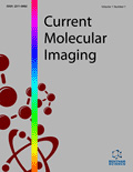Abstract
Burn wounds become colonized with bacteria during the course of recovery. In addition, there are some burn patients whose wounds do not heal for months. In the present study, we attempted to determine: 1. If seeding of a burn wound with Staphylococcus aureus would affect wound healing: and 2. If knocking out IL-6 and TNF, two cytokines commonly associated with burn injury, would alter burn wound healing. Using bioluminescent Staphylococcus aureus, there appeared to be no difference in the rate of wound healing between the inoculated burn wounds and the uninoculated burn wounds in the wild type mice. However, burn wounds on the Il-6 or TNF knockout mice did not heal as quickly as the wild type (WT mice). These data support the hypothesis that Staphylococcus aureus that colonize the wound may not alter burn wound healing. However, the present data suggest that Il-6 and TNF may play a role in burn wound healing.
Keywords: Burn, burn wound healing, Il-6, Staphylococcus aureus, TNF.
 38
38

